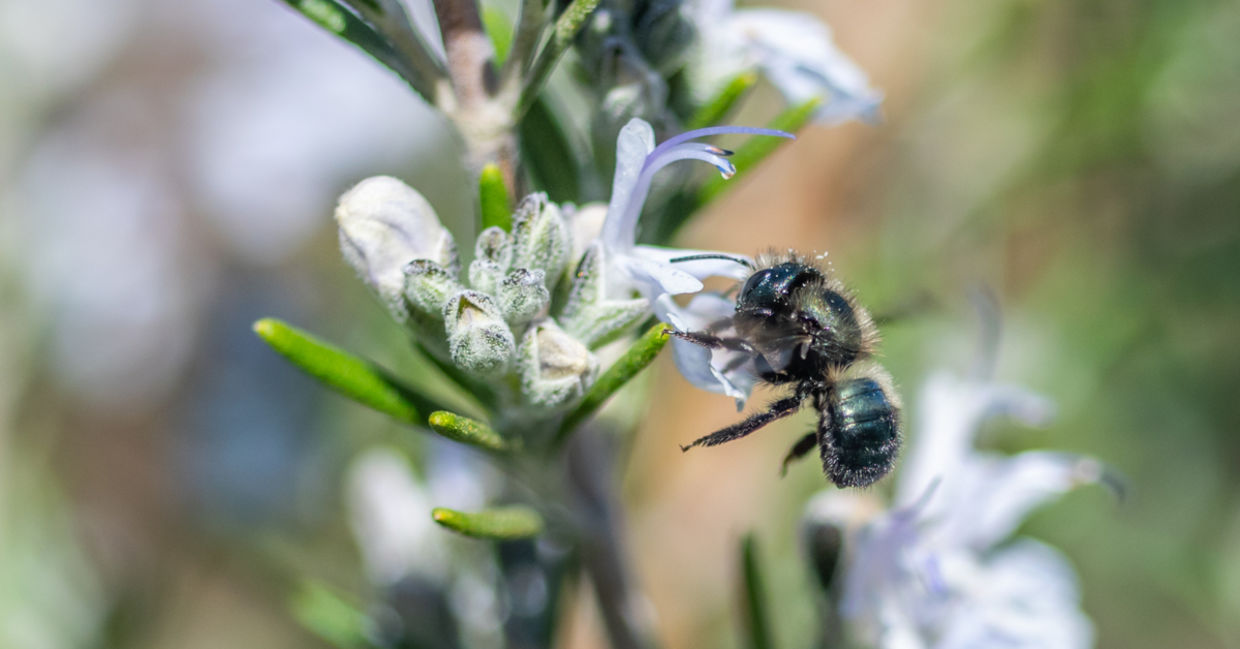This Organization is Giving Away Homes for Bees
Helping pollinators is good on Earth Day and any day!

(Jennifer Bosvert / Shutterstock.com)
Bees are essential to pollinate one third of the food that you love to eat like apples, almonds, and berries. So when you help bees, you are making sure that ecosystems are preserved and that the Earth can produce enough food to sustain a growing population. That’s why The Bee Conservatory is giving away homes for bees through its Sponsor-a-Hive program.
This program places homes for native bees – or solitary bees who do not live in a hive – and honey bee hives across the US and Canada to community groups, schools and gardens. Applications are being accepted through April 30, 2021 but if you missed the deadline, don’t worry, it's easy to make a DIY home for native bees.
Native bee's homes consist of a series of tubes and each is home to just one female bee who is expected to lay eggs in the home. These bees do not produce honey or wax and no beekeepers or experience is required.
The good news is that there are no legal restrictions to where they can be kept. The conservatory’s beautiful native bee home was designed by Cornelius Schmid and made by Brooklyn Woods, an organization that trains unemployed and low-income New Yorkers in woodworking fields according to the conservatory’s website.
“We’re looking for organizations that share our passion to nurture local bee populations, create habitat for them, and support their communities and local food systems,” Guillermo Fernandez, founder and executive director of The Bee Conservancy, told Treehugger.
>
This is vitally important because bees, especially native bees are in decline. The Center for Biological Diversity estimates that globally 1-in-6 bee species is regionally extinct and more than 4,000 native bees are declining so much that they could become extinct. In the US, 23 percent have declined; especially in farming areas.
“Since most bee species travel only a few hundred feet from their homes to gather resources, planting a pollinator garden or hanging one of our bee houses can have a significant and positive impact on species such as the leafcutter, mason, and small carpenter bees in your community,” Fernandez told Treehugger.
The groups that are awarded bee homes will also receive educational materials and support. “Since a large number of awardees are educators at grade schools, high schools, nature centers, or community gardens, we create educational materials that teach people about the importance of bees and the vital role they play in our ecosystem,” Fernandez said.
“These tools and updates will be shared throughout the bee season to help keep awardees on top of what may be happening in their bee house, and give them — and their bees — the tools they need for a successful season.”
Later in the spring, the Bee Conservancy will launch a new Facebook group so that the people who received the bee homes can share information and get to know each other.
But even if you don’t want a bee home or hive in your backyard, there are still plenty of things you can do to save the bees. You can plant wildflowers in your yard and don’t mow the dandelions; they are great for bees. You can also carry bee paper that is soaked with glucose so that hungry bees can get an energy drink and be on their way.
YOU MIGHT ALSO LIKE:
Dandelions Are Bees' Best Friends
Beeless Honey Helps Save Native Bees
Found in Florida: A Blue Bee Thought to be Extinct!






